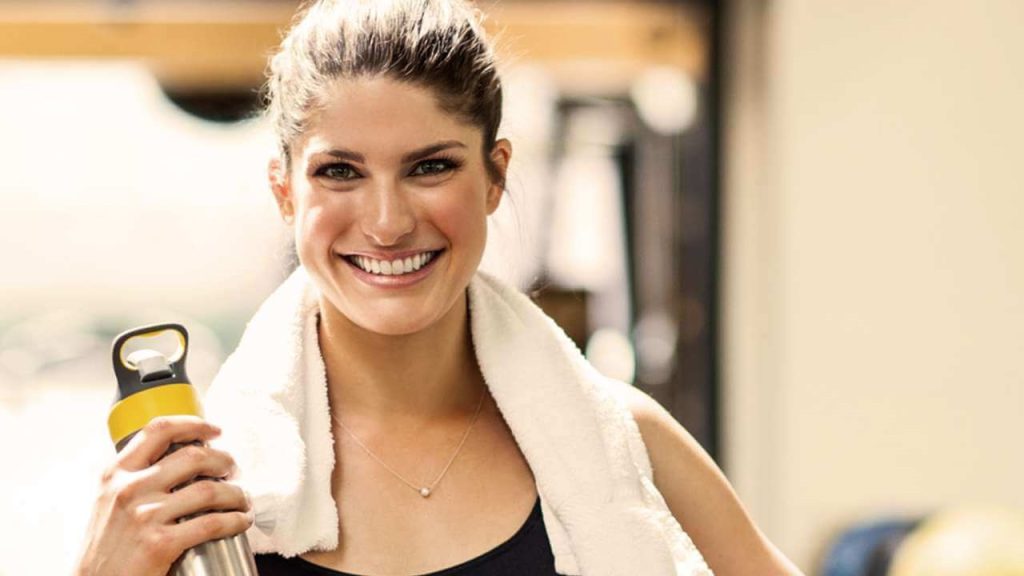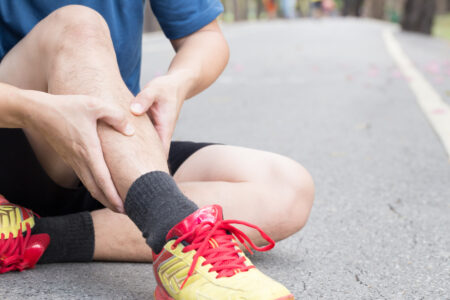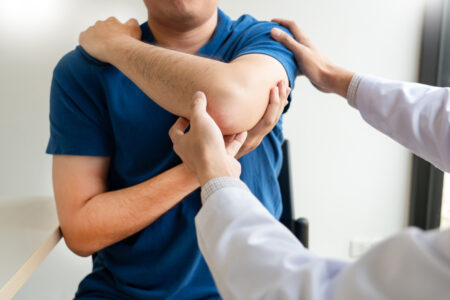A new year on the horizon typically brings with it all sorts of resolutions and vows to be healthier. As many Americans gained weight or fell into some unhealthy habits during the pandemic, those resolutions are likely to resurface. However, the ongoing pandemic and increased amount of time at home can still present a challenge.
Two Northwestern Medicine diet and fitness experts share their tips on how to eat healthily and exercise safely in the months to come.
Staying On Track with Healthy Eating
Attribute to: Mandy Guide, RDN, LD, clinical dietitian at Northwestern Medicine Central DuPage Hospital in Winfield
How do I avoid gaining weight?
Remind yourself of your personal goals, and decide if weight loss or weight maintenance is one of them. It is easy to say that weight gain is inevitable during this time, but that is not necessarily true. If you choose to stay on track and make a healthy lifestyle a priority during this time, you are not destined for the “Quarantine 15”.
How do I stay on track?
Log food daily! Now is a better time than ever to start food logging. It is the gold standard of weight loss, helping you to stay accountable every day, every meal, every snack. You can write it down in a journal or use an app to log your daily calorie intake, plus protein, fiber, etc. There are plenty of free apps available. Find the one that works best for you.
Avoid mindless snacking. This is likely a tough one right now being stuck inside. Remember your goals. Before you stand in front of the fridge, ask yourself “Am I hungry or just bored or tired (or whatever else you might be feeling)?” If you are NOT hungry, step away from the fridge. If you ARE hungry, here are some guidelines to remember while reading a label:
• Keep the snack less than or equal to 150 calories.
• Make sure there is at least 5 grams or more of fiber and protein combined.
• Keep sugars less than 6 grams per serving.
Some other things to keep in mind while snacking:
• Avoid eating in front of a screen/computer/TV. Sit down at the table to avoid distractions while eating.
• Avoid eating from the bag (chips/popcorn/nuts). It is hard to monitor portion control when doing this. Portion out your serving and put the bag away.
Have a plan: Failing to plan is planning to fail! Try writing down meals/snacks for the day the night before or the morning of. Having a blueprint of your day can help you have some direction. This also goes for those limited grocery store trips. Make sure you write down a list for what you need. It may be helpful for you to look up some simple, healthy recipes. Write down the healthy ingredients you will need. And, avoid going to the grocery store hungry!
Get creative with healthy foods. This may be the hardest goal of all, as I understand access to foods can be limited. Some ideas: canned chicken or tuna, low sodium beans, canned or frozen fruits/vegetables, Greek or light yogurt, light string cheese, nuts, eggs, low fat mayonnaise, turkey/chicken lunchmeat, cereals (that follow the snack guidelines below for fiber, protein and sugar). ChooseMyPlate.gov has lots of ideas.
Avoid liquid calories. Aim to drink only 0-5 calorie beverages. Avoid liquid calories like pop, juice and energy drinks. Substitute with water, diet drinks and sugar-free options. Milk is okay but try to have 1 percent or skim milk only.
Practice the plate method during eating meals. Be sure you are getting 3-4 oz lean protein at each meal, practicing portion control with carbohydrates, and filling half your plate with non-starchy vegetables. This combo of protein and fiber is more filling than a plateful of pasta, and can help control blood sugars.
MOVE, MOVE, MOVE! Any way, any time, any how! Get creative. Look at videos online; download an exercise app, or simply put on some music and dance. If it’s safe for you, take a walk or run outside. If you have exercise equipment in your home, put it to use. Make a daily plan for how many minutes per day you can be active. Remember, most of us have a little more time on our hands than normal. Make the most of it!
Maximizing Your At-Home Workouts Safely
Attribute to: Dan Charak, M.A.T., B.S., NASM-CES, fitness manager at the Northwestern Medicine Kishwaukee Health & Wellness Center in DeKalb
Can I get a comparable work out at home as the gym?
Yes you can. While the gym can offer machines and weight equipment that can make the workouts more difficult, you can incorporate the same types of workouts without the weight and still make it an intense experience. Body weight is a more ideal option when working out in a home setting, but you can always use other resources, like chairs and milk jugs, to spice up your workouts.
What precautions should I take?
Some precautions you should look out for include heart rate, sturdiness of your home, and patience. When working out at home, you might find it hard to increase your heart rate and find it frustrating to not achieve it. Worry not as you are adjusting to your new environment and it might take a day or two before you start getting the numbers you are seeking. Be cautious of what workouts you can do in the house. Understand how sturdy your furniture is before using it to work out with. Lastly, be patient with the process. While it might be upsetting not being able to attend a gym to work out, it is only a temporary situation. You can always develop muscles or lose weight if you stay dedicated to your workout and take each day with the inspiration of getting better.
How can I turn my home into a gym?
If you plan on working out at home, try to give yourself as much space as possible. If that includes moving furniture around to accommodate your desired workout space, then do what you can. Try to give yourself enough space to do 2-4 walking lunges in one direction. I would recommend using resistance bands as they are one of the cheapest and most beneficial pieces of equipment that can be used in a home and gym setting. You can also use home products, like milk jugs and sturdy furniture chairs, to help assist in some of your workouts. You can fill the milk jugs with water and use them for bicep curls or lateral raises. You can use furniture chairs to help assist in chair dips or chair squats. However, just be very careful when using furniture as you do not want to damage or destroy it during your workout.
I don’t have a lot of room at home. What advice do you have for exercising in a small space?
Depending on how much space you have at your home, you can always modify and adjust the type of workouts you would like to do. If you lack space to do lunges, you can modify your workout and incorporate wall sits instead of lunges as they both target similar muscle groups.
I don’t have weights at home. What can I use for strength training?
You can always do body weight workouts. Those include pushups, squats, burpees, planks, crunches, sit ups, etc. If you want to include some type of weights into your workouts use resistance bands or milk jugs filled with water. With those modified weights, workouts like bicep curls or weighted lunges could almost be near identical to dumbbells you can use at the gym. You can use furniture chairs to help assist in chair dips or chair squats. However, just be very careful when using furniture as you do not want to damage or destroy it during your workout.
What online resources for are good for at-home workouts?
If you plan on using YouTube or workout apps for a workout, I recommended taking some precautions. Most videos are geared toward people who are very active or have a lot of fitness experience and don’t target the beginner or the general public. There is also plenty of incorrect information online.
Check the credentials of the person who is providing the online tutorial or video. Seek out experts with a bachelor’s degree in an exercise related field such as kinesiology or exercise science; and look for someone who has a nationally accredited certification such as ACSM, NSCA, ACE, NASM, or CSCS.
What technology do I need?
The only pieces of technology that I use for working out are my heart rate monitor and treadmill. A heart rate monitor will give you an idea of how hard you are working. A treadmill is convenient to have as it can help increase your endurance while working in a small area.
Is it OK to exercise outdoors? What precautions should I take?
During our current situation, you can go outdoors, but proceed with caution and remember to practice physical distancing. Avoid touching your face. Do not share drinks with anyone. Wash your hands with hot water and soap. Bring a travel size hand sanitizer with you if you cannot find a place to wash your hands.








